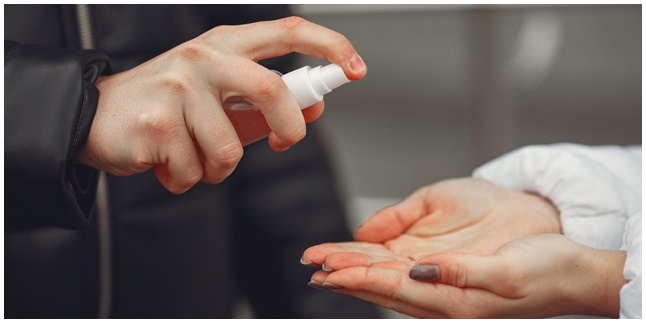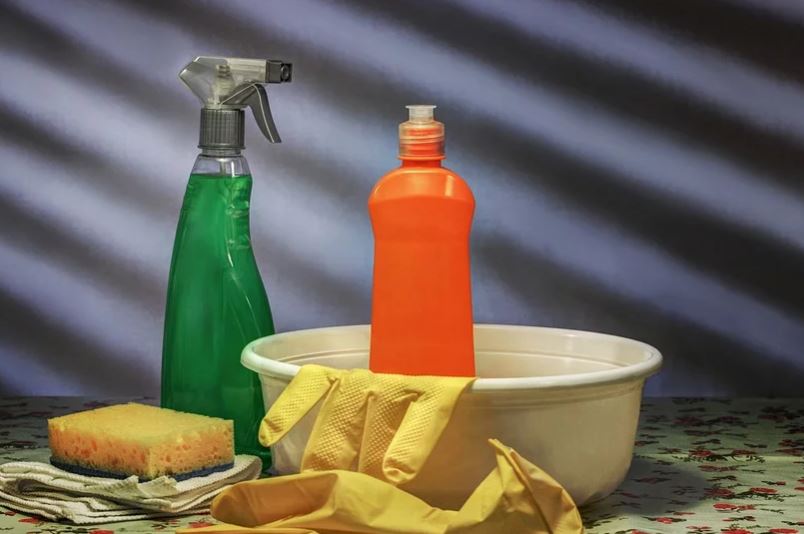7 Ways to Overcome Stress During 14 Days of Self-Quarantine to Avoid the Corona Covid-19 Virus
Boredom and stress can be major disturbances when undergoing self-quarantine. Let's find out how to overcome stress and boredom in this article.

Kapanlagi.com - The number of positive corona patients or covid-19 is increasing day by day. Various efforts are being made to prevent the spread of the corona virus. Prevention is done starting from the use of antiseptics and disinfectants. So what is the difference between antiseptics and disinfectants?
Many people have used both of these materials to prevent the corona outbreak. However, many people do not yet know the use of these two materials.
Basically, antiseptics and disinfectants are indeed used to kill viruses. However, the way they are used is different even though both are used for cleaning liquids. Let's take a look at the discussion about the difference between antiseptics and disinfectants below.

Antiseptic (credit: pixabay)
Antiseptic is a chemical compound used to kill or inhibit the growth of microorganisms on living tissues such as the skin surface. Antiseptics are used for the body, unlike disinfectants which are used for inanimate objects.
Antiseptics are safer to use on living tissues. The use of antiseptics is highly recommended during disease outbreaks such as COVID-19 to slow down the spread of the disease.
According to healthy line, antiseptics are commonly used for the following purposes:
- Antiseptics are used as hand cleansers. The use of antiseptics on hands can clean them from disease-causing microorganisms.
- Antiseptics can eliminate germs on mucous membranes. Antiseptics can be applied to the urethra, bladder, or vagina. Antiseptics can also treat infections in these areas.
- Antiseptics can be used to cleanse the skin before surgery. This is done to protect the skin from harmful microorganisms on the skin.
- Antiseptics can treat skin infections, such as minor wounds and burns.
- They are used to treat throat and mouth infections. Some throat lozenges contain antiseptics to help alleviate sore throat caused by bacterial infections.

Antiseptic (credit: pixabay)
Disinfectant is a chemical used to prevent infection or as a medicine to kill germs and diseases. Disinfectant is used on the surfaces of inanimate objects such as tables, door handles, cabinets, sinks, and others.
Unlike antiseptics, disinfectants do not have penetrating power, so they are unable to kill microorganisms that are present in crevices or mineral contamination.
According to Hello Sehat, disinfectants are divided into 2 types, namely disinfectants used in hospitals and disinfectants for general use.
Disinfectants in hospitals are used to control the spread of infections and to sterilize medical equipment, floors, walls, and others. Meanwhile, disinfectants used for general purposes are usually used to sterilize table surfaces, floors, and so on.
Here are the uses of disinfectants that you need to know:
- Disinfectants are commonly found in floor cleaners, kitchen cleaners, and household cleaners. Disinfectants are used to clean and kill germs on inanimate objects.
- Disinfectants function as liquids that can inhibit the growth of microorganisms and are not harmful to health.
- Disinfectants are more effective in killing microorganisms compared to other cleaning liquids.

Side effects of antiseptics and disinfectants (credit: freepik)
Although effective in killing germs and disease-causing viruses, some types of antiseptics and disinfectants with strong concentrations can cause several side effects such as skin burns if not diluted with water or other fluids first.
Irritation caused by antiseptic or disinfectant substances is called contact dermatitis or inflammation in the form of itchy rashes and redness on the skin due to direct contact with certain substances. If you use antiseptics to clean wounds, it is advisable to limit their use only for minor wounds.
Do not use antiseptics and disinfectants if you have wounds in the eye area, wounds caused by human and animal bites, deep and large wounds, severe burns, and wounds caused by foreign objects lodged in the skin.
The disinfectant glutaraldehyde has side effects such as:
-Nausea
-Headache
-Blocked airways
-Asthma
-Rhinitis, or inflammation or irritation in the inner lining of the nose. Marked by symptoms of cold, stuffy nose, and sneezing.
-Eye irritation, or itchy and red eyes causing irritation.
-Dermatitis, inflammation of the skin causing redness, itching, peeling, scaling, and even swelling.
-Skin discoloration or changes in skin color.
Therefore, disinfectant fluids are more toxic and not recommended for application or use on the skin or other living tissues. This can cause skin irritation.
Currently, antiseptics and disinfectants are in high demand to prevent the spread of COVID-19. However, the availability of antiseptics and disinfectants is becoming increasingly difficult to find. Therefore, it is not a bad idea to make your own antiseptics and disinfectants as a solution to the scarcity of these materials.
(kpl/dtm/gen)
Cobain For You Page (FYP) Yang kamu suka ada di sini,
lihat isinya
Boredom and stress can be major disturbances when undergoing self-quarantine. Let's find out how to overcome stress and boredom in this article.
Reducing anxiety and fear during the Covid-19 corona virus pandemic is one of the best ways to face this crisis. You may be one of the people who feel anxious and afraid during the Covid-19 corona virus pandemic. So, what should you do?
To avoid the corona covid-19 virus, after traveling, you must do the following things to prevent the spread of this virus. So, what should be done after traveling?
Currently, the availability of masks is very scarce, while we really need masks when we are outside. Don't worry, Kapanlagi has summarized several ways to make emergency masks with minimal cost. Let's take a look
The corona virus outbreak has made everyone have to stay at home and do many activities with their families at home. Including celebrating birthdays. Here are Indonesian celebrities who celebrate their birthdays only at home. Curious? Let's check it out.
Tegal City, which implemented a lockdown, became a topic of conversation. So what exactly is meant by lockdown? Find out in this article.
The emergence of hantavirus has surprised the world. This is because the corona virus outbreak has not subsided yet. What are the facts about hantavirus? Is it more dangerous than the corona virus? Find out in this article.
Sunbathing under the sunlight is one of the right ways to prevent the corona virus. Vitamin D from the sun can boost the immune system. So, when is the best time to sunbathe?
Currently, the corona virus covid-19 outbreak is happening in Indonesia. Many people are practicing social distancing, including Yuni Shara. What activities does Yuni do while practicing social distancing at home? Let's find out more here.
Positive cases of corona covid-19 without showing symptoms are almost experienced by all countries. So what should be done if positive for corona covid-19 but asymptomatic? Here are the steps that must be taken.
Temulawak is one of the four herbal drinks consumed by President Jokowi to avoid corona. So what are the benefits of temulawak? Find out in this article.
Masks are the most important item to protect yourself from the corona virus or covid-19. The various types of masks with various options certainly make you confused. So what kind of mask is suitable for preventing the spread of the corona virus?